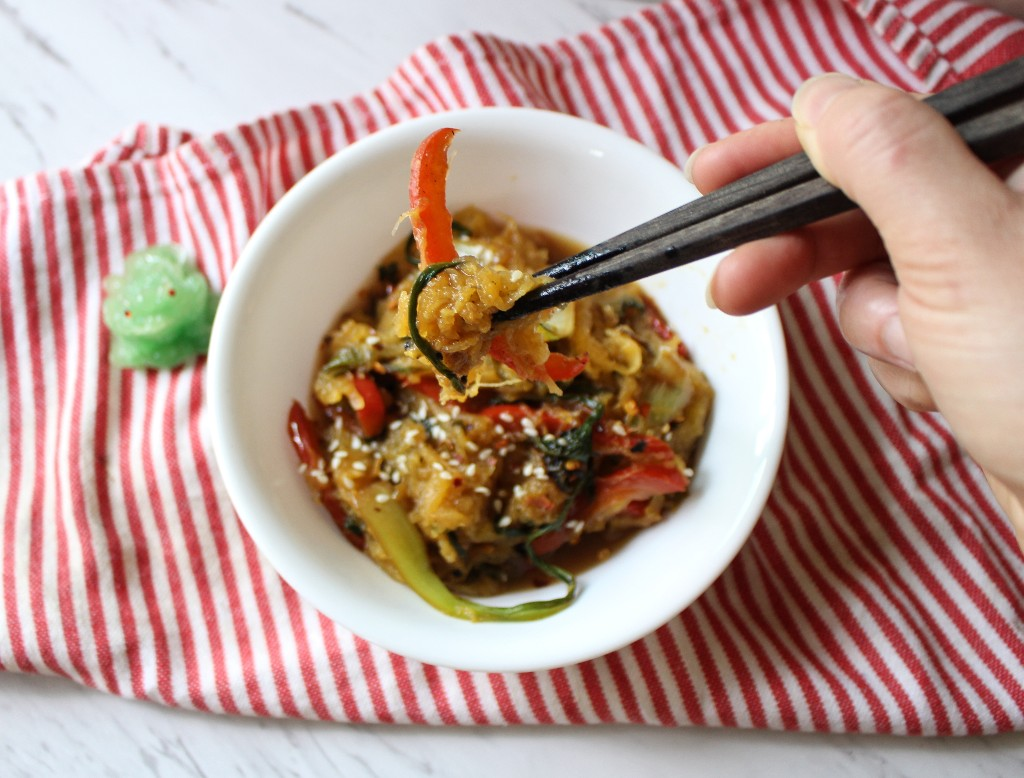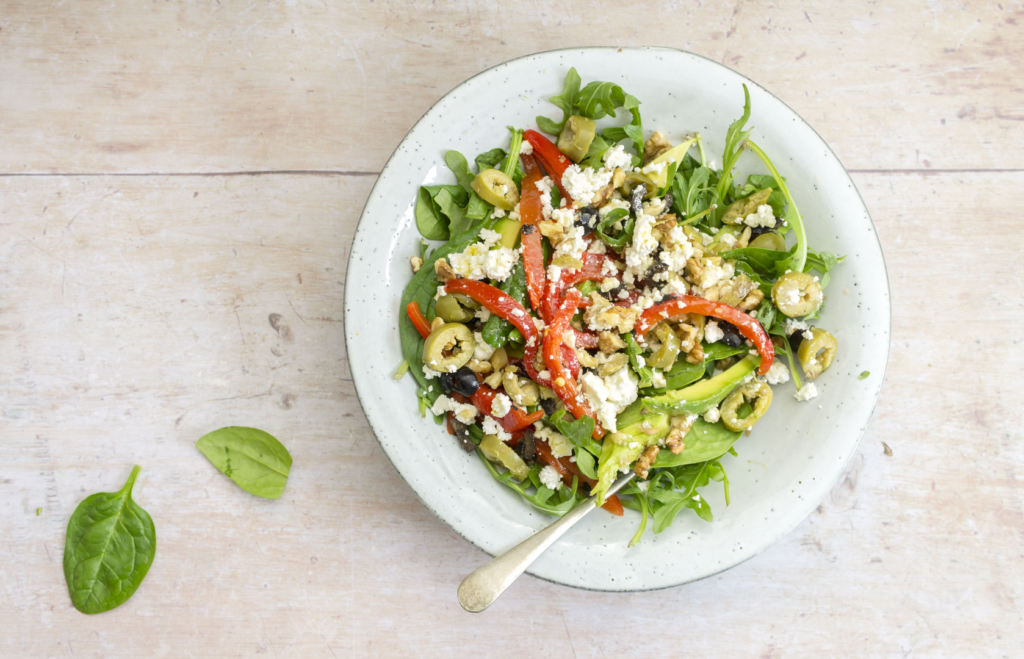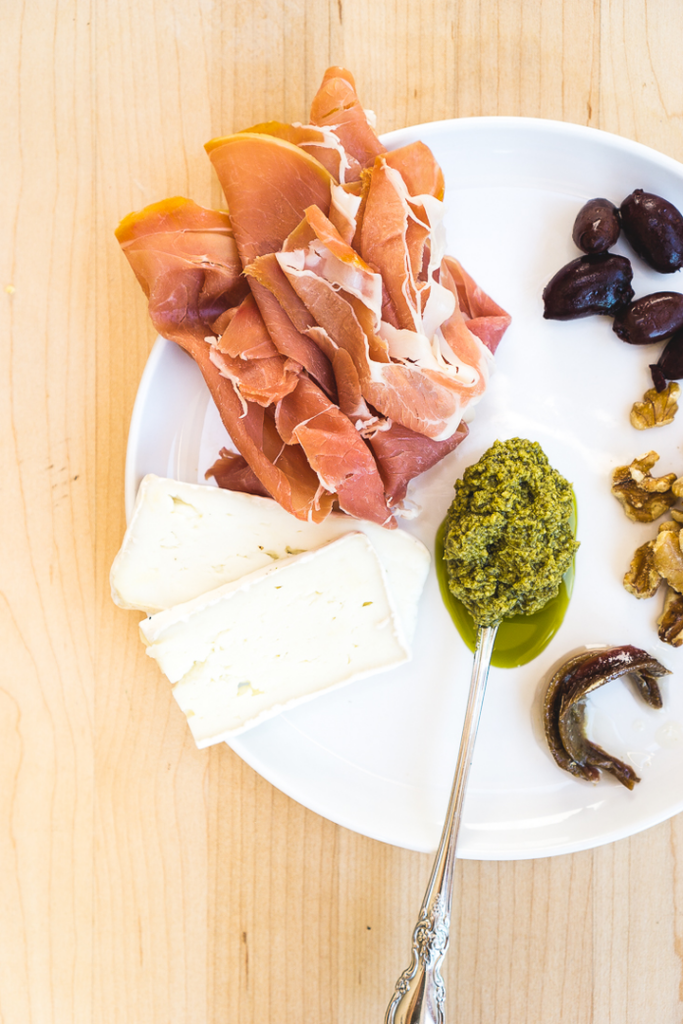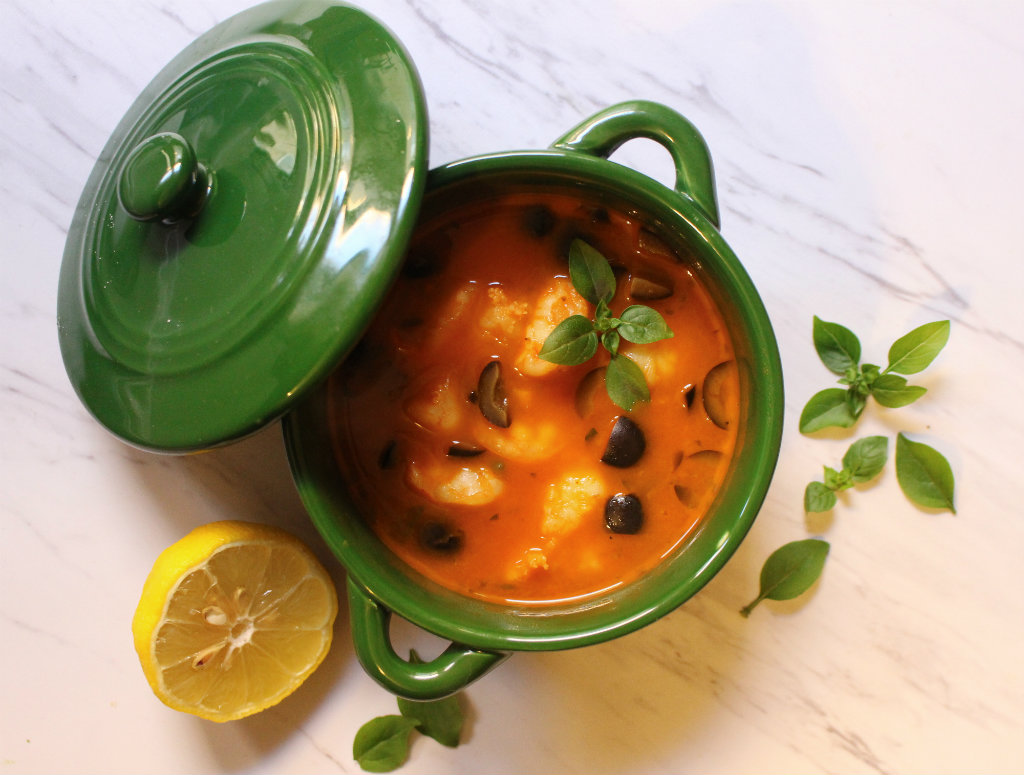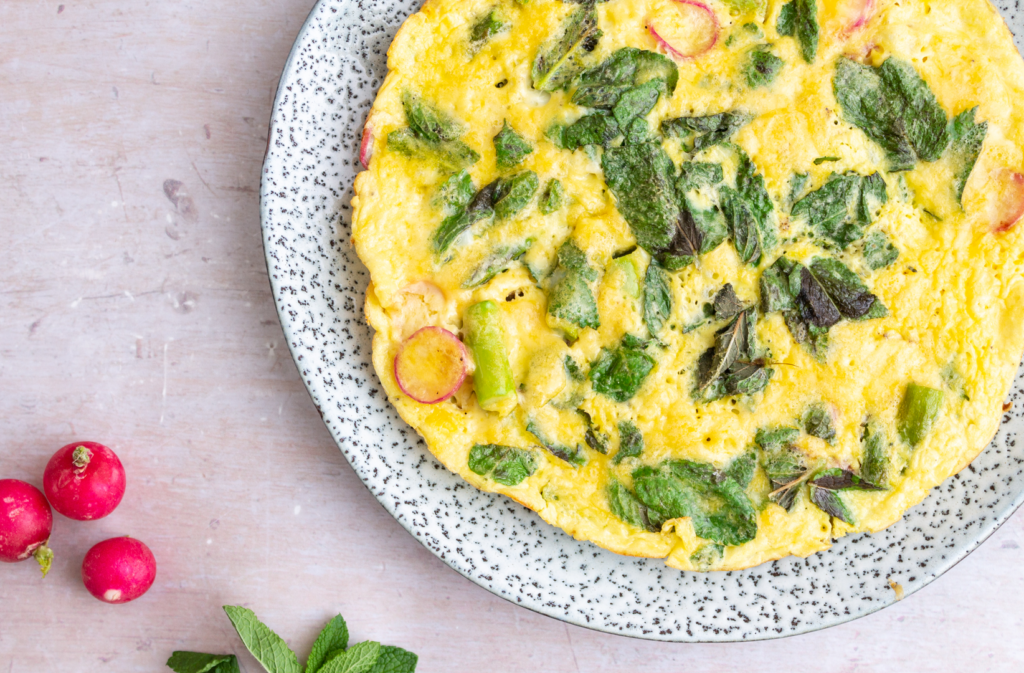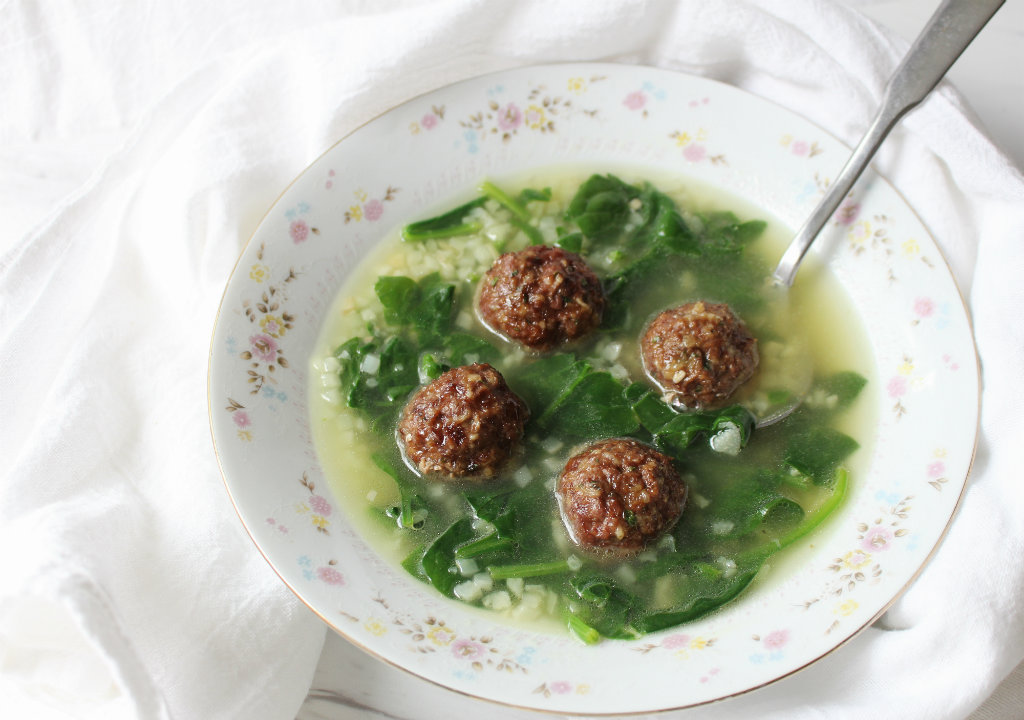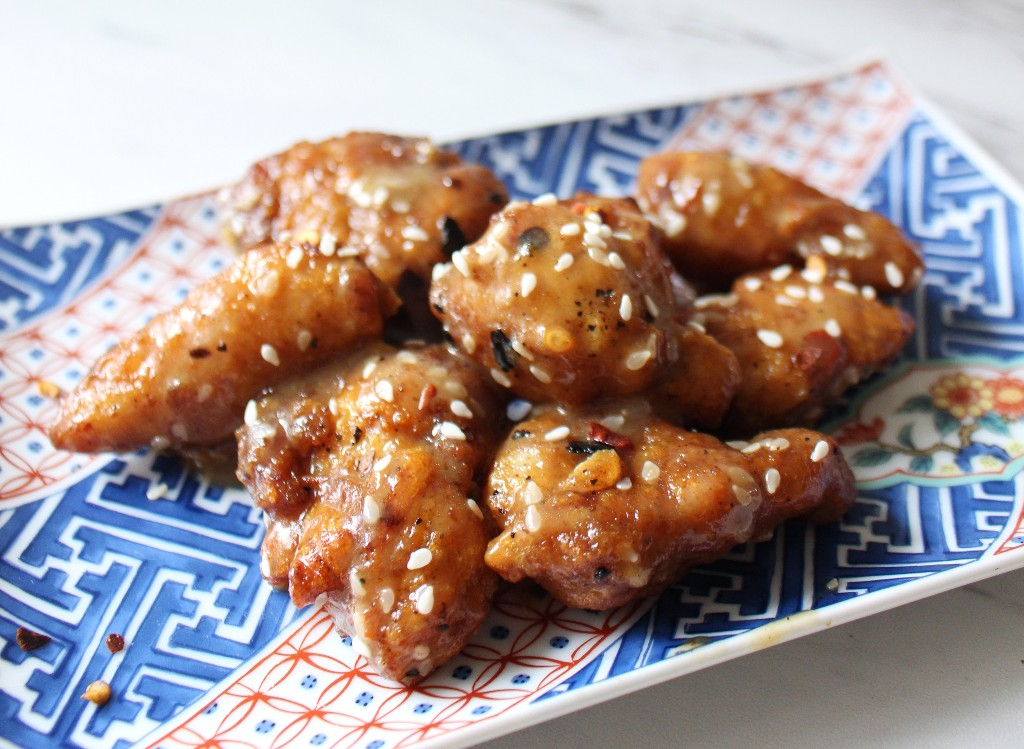About
This Keto chow mein has all the right flavors of your favorite takeout place: salty soy sauce, fresh garlic and ginger, and hot wok-fried vegetables. Instead of rice noodles, which would have too many carbs, your vegan Keto chow mein is made with spaghetti squash noodles. The recipe will direct you through preparing a whole spaghetti squash and how to use the correct amount for the chow mein. An additional note about preparing the spaghetti squash is made further below. You can easily enjoy this vegan chow mein as it is, or you can add more vegetables or Keto ingredients at your discretion to turn it into a filling meal. For meal prepping, you can portion the chow mein into meal prep containers once it has cooled completely. Keep the Keto chow mein in your refrigerator for up to 5 days. Just microwave the chow mein to reheat it.
A Note About The Spaghetti Squash
You notice that the ingredient list for this recipe includes measurements for spaghetti squash that has already been cooked instead of raw. It’s hard to know exactly how much food you’ll yield from a whole spaghetti squash, so it’s better to measure your ingredient this way. By choosing a large spaghetti squash, you’re ensured to have to amount of cooked spaghetti squash you’ll need to make enough chow mein as you’d like.
Vegan Toppings To Add To Chow Mein
If you’re enjoying your Keto vegan chow mein as a side dish, there are many toppings you can add. Spices like sesame seeds, red pepper flakes, or seaweed flakes are all very fitting. If you’re looking to add more to your chow mein to upgrade it from side dish to the main course, you can add bulkier ingredients. Top your chow mein with grilled avocado slices or tofu prepared to your taste.
Ingredients
- 12 oz spaghetti squash cooked with salt
- 1 tablespoon olive or extra virgin olive oil
- ½ teaspoon salt
- ¼ teaspoon black pepper
- 2 ½ oz bok choy
- 2 oz red pepper
- ¾ oz scallions
- ½ tablespoon avocado oil
- 2 tsp, chopped garlic
- 1 teaspoon ginger
- 1 tablespoon sauce soy
Instructions
- Turn on your oven to preheat to 400 degrees and spray a clean sheet tray with pan spray. Prepare a large spaghetti squash by removing the stem and slicing it in half lengthwise. Use a spoon to scrape out the seeds and loose fibers from the centers of the squash halves. With the squash open-faced, drizzle the olive oil all over the visible flesh. Season the same areas with salt and pepper.
- Flip the squash halves over onto the sheet tray, so the hard exteriors are facing up. Roast the squash in your oven for 45-60 minutes, or until the flesh is soft enough the pull it apart into “spaghetti” with a fork. Check the spaghetti strands for al dente tenderness – you don’t want them to be too firm or too soft to enjoy. When all the squash is pulled into spaghetti, transfer it to a large mixing bowl, discarding the squash exterior. The spaghetti squash weight listed in the ingredients is the amount of cooked spaghetti squash you’ll be using in the recipe.
- Set the appropriate amount of spaghetti squash aside to cool in the large mixing bowl. Meanwhile, prepare the bok choy, red bell pepper, and green onion by slicing them all into thin strips. Think of how the sliced vegetables in the noodles you receive from Chinese takeout look as you slice your own. The closer to a thin Julienne cut you can make, the better your dish will turn out.
- Heat the avocado oil in a wok over very high heat. If you don’t own a wok, a non-stick skillet will do. When the avocado oil is hot enough for frying, add the sliced vegetables to the wok. Gently toss the vegetables in the oil until they start browning. Stir minced garlic, minced ginger, and soy sauce into the vegetables. As the soy sauce steams, toss the vegetables until they fry to a very soft texture with a variety of dark golden brown colors throughout.
- When the vegetables are done, pour them with any excess oil from the wok into your large mixing bowl of spaghetti squash. Gently fold the hot ingredients together until you have an even chow mein mixture. A pair of tongs will be best for folding the ingredients together. Serve approximately 4.5 ounces of hot chow mein per person with any Keto toppings of your choosing.
Nutrition Facts
- Servings: 4
- Calories: 81.3kcal/340.2kJ (per serving)
- Fat: 5.4g (per serving)
- Carbs: 8.1g (per serving)
- Protein: 1.5g (per serving)
